Asteroids
Asteroids
The region between the orbits of Mars and Jupiter is filled with millions of
small rocky bodies, ranging from the largest, Ceres, almost 1000 km (600 miles)
in diameter down to dusty particles.
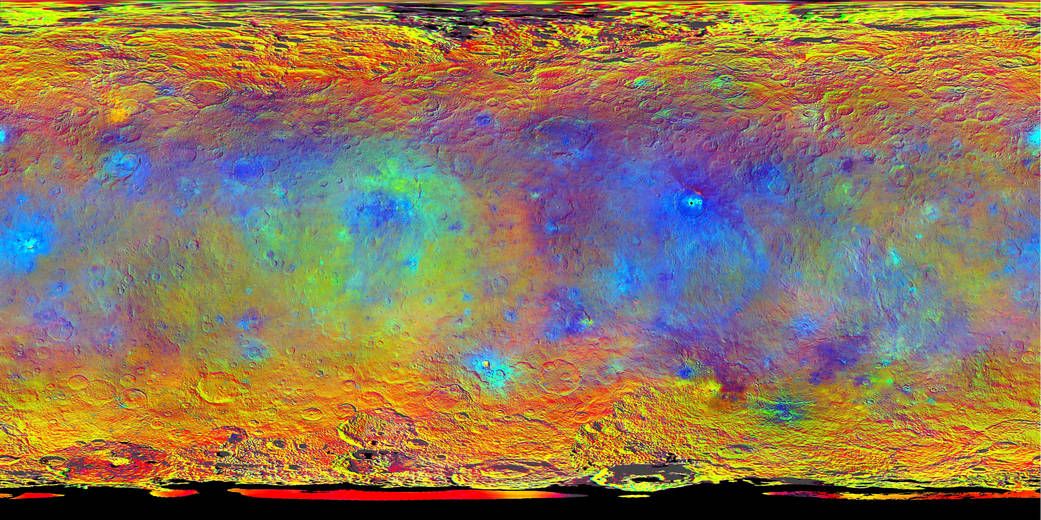
Credit: (NASA/JPL-Caltech/UCLA/MPS/DLR/IDA)
The asteroids are thought to be the result
of disrupted protoplanets from the beginning of the solar system, probably due
to the fact that they are so close to giant Jupiter and its intense gravity.
They come in all shapes, sizes, and compositions and may hold keys to the early
formation of the solar system over four and a half billion years ago.
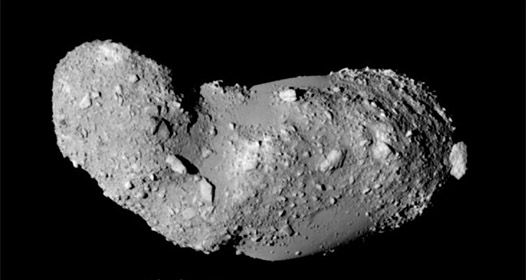
Asteroid 25143 Itokawa taken by the Hayabusa probe
Credit: (JAXA)
The majority of meteorites that fall to Earth are pieces of asteroids from the asteroid belt.
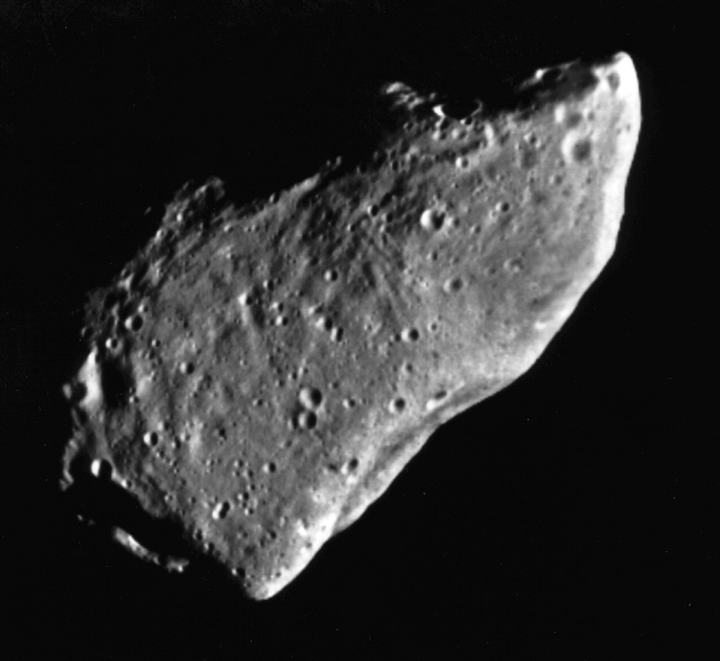
Credit: (NASA, Galileo)
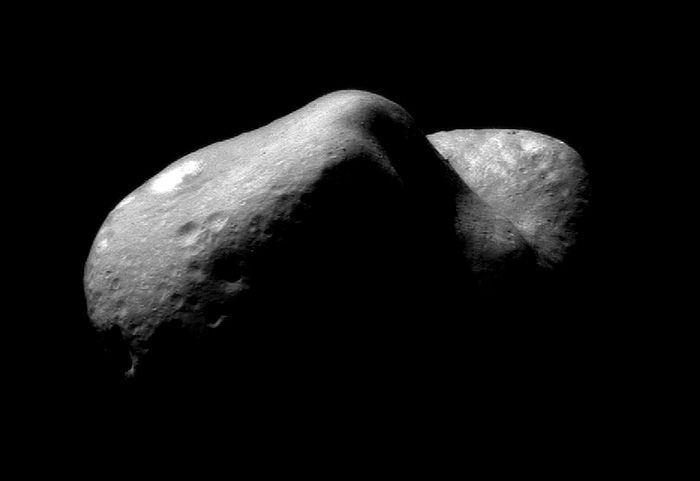
Credit: (NASA, NEAR)
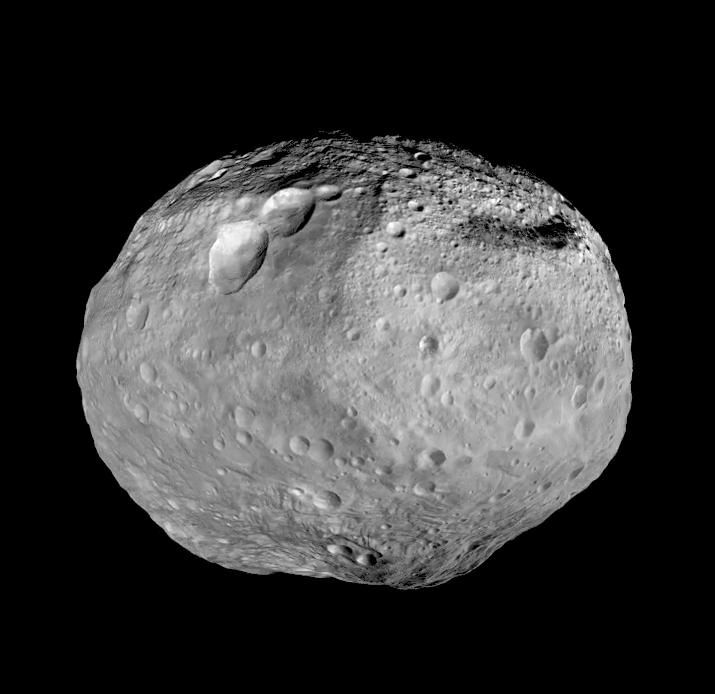
Credit:(NASA/JPL-Caltech/UCLA/MPS/DLR/IDA)
Fun Facts
- Most meteorites found on Earth are originally from the asteroid belt, some can even be traced back to the particular asteroid they came from.
- Despite the large numbers of asteroids, the main asteroid belt is still mostly empty
space, and spacecraft can travel through it with almost no risk of collision.
- Ceres, the largest asteroid, contains about half the total mass of the asteroid belt.
Missions
Galileo: Flyby (Gaspra, 1991; Ida, 1993)
NEAR-Shoemaker: Orbiter (Mathilde, 1997 flyby; Eros, 1999-2001)
Cassini Flyby (Masursky, 2000)
Deep Space 1: Flyby (Braille, 1999)
Stardust: Flyby (Annefrank, 2002)
Hayabusa: Touchdown (Itokawa, 2005)
Rosetta: Flyby (Steins, 2008; Lutetia, 2010)
Dawn: Orbiter (Vesta, 2011; Ceres, 2015)
OSIRIS-REx (Asteroid 1999 RQ36, ~2020)
